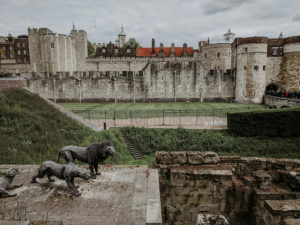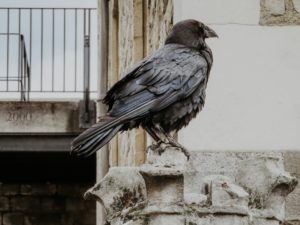Welcome to England
The beginning of our trip started when we landed in England at the Heathrow Airport around 10:04 a.m. Jet-lagged and in desperate need of coffee we made our way through the airport, collected our luggage, and met our guide David, before heading into London.
Buckingham Palace
 The first stop on our trip was at the Buckingham Palace, the working headquarters of the British monarchy. Buckingham Palace is where the Queen and other members of the royal family lives and resides. The palace is also where the Queen carries out her official duties as the head of the state.
The first stop on our trip was at the Buckingham Palace, the working headquarters of the British monarchy. Buckingham Palace is where the Queen and other members of the royal family lives and resides. The palace is also where the Queen carries out her official duties as the head of the state.
The Tower of London
After the quick visit to the Buckingham’s Palace we hoped back onto our bus and took a quick tour of the surrounding area before stopping outside the Tower of London. The Tower has served as a castle in wartime, a king’s residence in peacetime, and as the execution site of rebel’s.
The Towers of London was the residence for royalty as well as a war fortress. A majority of the rooms were built around 1240 by Henry III, the king most responsible for the expansion of the Tower. The rooms of the Tower are furnished as they might have been during the reign of Henry’s son, Edward I. Some of the rooms include a Edward’s re-created bedroom and his thrown room. After the British Civil War, Oliver Cromwell temporarily deposed of the monarchy (during the 17th century) the Tower ceased to be a royal residence.
 While exploring the area, we were able to see the Crown Jewels. The exhibit displayed the Scepter and Orb, The Crown of the Queen Mother, the Imperial State Crown, along with other jewels and treasure.
While exploring the area, we were able to see the Crown Jewels. The exhibit displayed the Scepter and Orb, The Crown of the Queen Mother, the Imperial State Crown, along with other jewels and treasure.
Scepter and Orb
After being crowned, the new monarch is handed the Scepter and Orb. The Sovereign’s Scepter is encrusted with the world’s largest cut diamond—the 530-carat Star of Africa, and the Orb symbolizes how Christianity rules over the earth. The coronation has been described as a marriage between the church and the state in Britain, and the ceremony celebrates the monarch’s power to do good for the whole of the nation.
The Crown of the Queen Mother
This crown was last worn by Queen Elizabeth II’s mother—who passed away in 2002– and has the 106-carat Koh-I-Noor diamond positioned on the front. Fun superstition surrounding the diamond is that the Koh-I-Noor is considered to be unlucky or male rulers, and therefore only adorns the crown of the king’s wife.
The Imperial State Crown
This crown is what the Queen wears for official functions such as the State Opening of Parliament. The Imperial State Crown is what you see on representing the royalty on Britain’s coins and stamps. Among the crown’s 3,733 jewels are Queen Elizabeth I’s former earrings, a. 13th-century ruby look-alike in the center, and Edward the Confessor’s ring.
The Ravens
 While exploring the Tower of London you might come across some giant ravens. According to tradition, the Tower and the British throne are only safe as long as ravens are present there. Eight birds—a required six, plus two spares—have clipped wings to keep them within the grounds.
While exploring the Tower of London you might come across some giant ravens. According to tradition, the Tower and the British throne are only safe as long as ravens are present there. Eight birds—a required six, plus two spares—have clipped wings to keep them within the grounds.